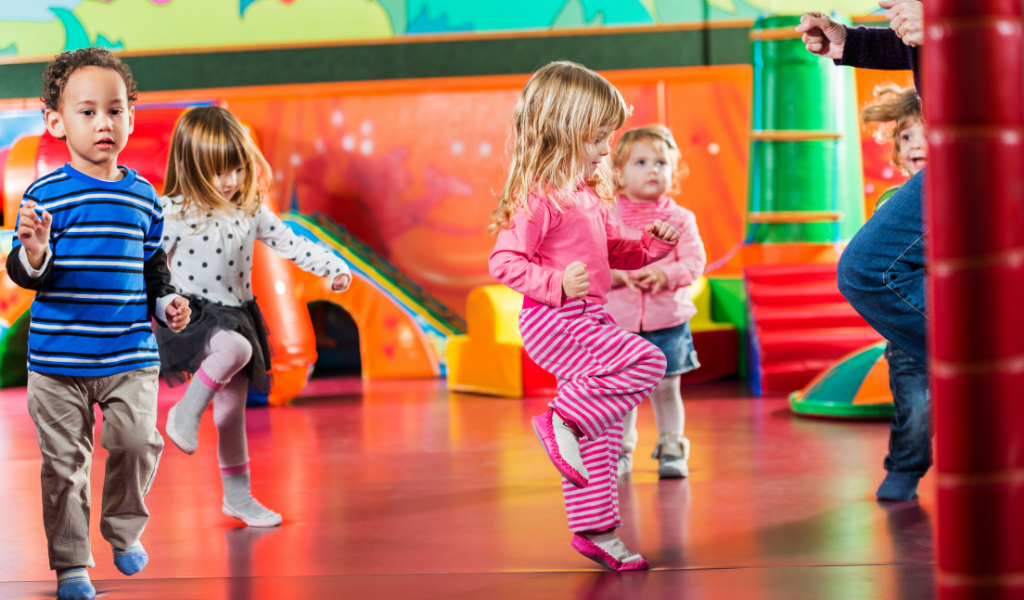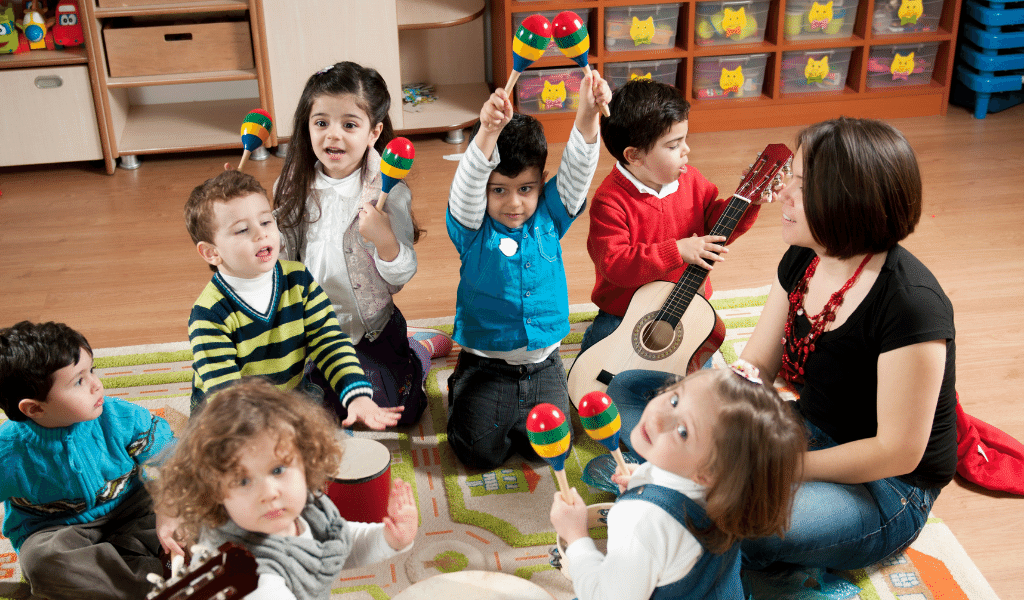Music, song and sound is very much at the heart and soul of all we do in the early years. Music taps into all of our emotions – joy, excitement, sadness and even anger – and is such a powerful means of expression for children. It is a universal language and, as such, is one we should all learn to speak!
You know that feeling when a song starts and you look down and your foot is tapping involuntarily? That’s because we humans have an inbuilt response to rhythm. From a young age, children will start to bop, bob and sway to music and this is so powerful in them learning about balance and how their limbs move. And there are many ways we can build upon movement to music to support children in their physical development:
Using scarves, ribbons or bubble wands when moving to music to make big circles, sweep in arcs and cross the body, all work to build the strength in children’s shoulders, arms, wrists and core.
Listening to and moving to music is essential in developing a sense of rhythm in children. Action songs give children a different sense of confidence and freedom to explore and experiment with a wider range of movement. Responding to the anticipation of movements and moments in a song teaches children to gain control over their bodies and to make their movements and actions more deliberate – try building on this by pausing before an action and/or changing the tempo of the song.

Music has been used to tell stories for eons from bards to nursery rhymes. Nursery rhymes support children in developing a sense of story sequence, anticipated events, repeated phrases and even characters. Using props, puppets, masks and items such as story spoons helps children to begin to explore and take ownership of the stories within nursery rhymes and will often give them the courage to start experimenting with creating their own songs and rhymes!
Mark making to music is a fun way to explore giving meaning to marks with children. Try providing a long sheet of wallpaper along the floor (inside or outside) or sheets hanging vertically on walls or fences with chalks/paint brushes to use on them and playing different styles of music to the children. You will be amazed to see the different marks and movements that children produce in response to what they hear! A fantastic resource for supporting this is the Write Dance programme.
Counting songs are a wonderful way to encourage children to begin to recite and play with number names, values and sequence. It is important to try to use rhymes that count up as well as down so that children get the experience of numbers working both ways. This is another way in which rhythm can play an important role – children learn to recite with greater confidence and accuracy when doing so in a rhythmic way. A great way to support and extend this is by adding opportunities for music making alongside singing – playing out rhythms with instruments, using sticks on fences or trees, or by using body percussion such as clapping, stamping or jumping.

Music can be such a valuable way to allow children to explore their emotions and ideas. When you are feeling angry or excited, what better way to express that than by tapping out a song in your very own pots and pans band?!? When you are sad, does soft music soothe you? The real beauty of music is that it is completely free – there are no rights or wrongs, no correct way to do it – children can immerse themselves entirely in what they are feeling and allow it to flow through their body and emerge as movement and sound.
Talk to children about how music makes them feel – you can use props, photographs, puppets or mirrors to spark discussion with children about how their bodies and faces are responding to what they hear. Provide access to instruments, sound makers and music players wherever possible so that children can tap into this whenever they feel moved and motivated to.

Most important of all, music is for fun! To hear, to sing, to dance, to spring, to feel! Music is at its most valuable as a vehicle for learning when it comes from a place of fun and joy, when the children have their own motivations and freedom to explore and play with it. So as you weave strands of learning through your musical provision, remember to keep the note of joy at the centre of all you do!

Vikkie Murray has worked in education for over 15 years – as an qualified early years teacher, SENDCo, early years specialist teacher for a national daycare company and most recently as a registered childminder. She is currently undertaking the Hygge in the Early Years accreditation, is a Kinderly Ambassador and is a passionate advocate for child-led learning.